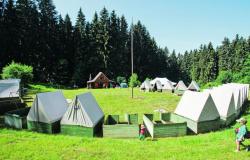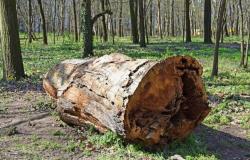The tunnels will make up a total of 18 of the 21 kilometers of the entire Stockholm bypass. Subterra has been drilling four kilometers in the Skärholmen area since 2017. The value of its contract is 7.3 billion Czech crowns. It included, among other things, the deepest part of the entire structure, which lies 70 meters underground under Lake Mälaren.
One of the innovations rarely encountered in Central Europe was the Scandinavian Drill & Blast method for Czech builders, i.e. a combination of drilling and blasting with explosives. Subterra is now trying to apply this on a smaller scale, for example, during the construction of line D of the Prague metro.
Special bricks also resist termites. Thanks to the idea of a CTU student, they grew into a school in Africa
Science and schools
“In Sweden, we blasted up to a thousand cubic meters of rock at once. We were able to do four to five such at-bats a week. Although we worked in a zone where noisy work was not allowed at night and on weekends,” said Miroslav Zobaník, Subterra’s Director of Foreign Business. The largest shots cleared space at a distance of almost six meters. In the Czech Republic, the shifts are half or more smaller.
Technology was not the only innovation that the project allowed the builders to get to know more closely. The Swedes took great care to ensure that the construction of the tunnel was ecological. It is precisely the emphasis on sustainability that is becoming increasingly necessary for construction companies in the domestic market as well. They are pushed to do so by European regulation and also by banks that focus on ecology when evaluating loan applications.
Experts also confirm the need to pay attention to sustainability. For example, the consulting company CEEC states in its current report on the state of the Czech construction industry that companies are increasingly looking for new building materials precisely because of ecology. “In practice, companies use, for example, recycled materials, natural insulation or new composite materials,” stated CEEC.
Recycling and the ship
According to Zobaník, Subterra also chose the path of recycling. Roughly two-thirds of the material that the company needed as a base for the road was taken from what was mined during blasting. She crushed the material directly on the construction site, so that it was as little necessary to transport it elsewhere.
When it was necessary to transport it, the company chose shipping instead of trucks in many cases. “About twenty percent of the debris was taken away by ship,” said Zobaník. “A truck takes 40 to 45 tons, so you get two to three thousand tons on a ship. One ship took away one shot, maybe 60 to 70 trucks would be needed,” he added.
The bypass is also one of the first Swedish projects built using the digital BIM method. It provides comprehensive information about a specific project in one place, and experts assume that it will play a big role in the digitization that the construction industry will undergo in the coming years. It significantly reduces the error rate. In the Czech Republic, however, according to the aforementioned CEEC study, only four percent of companies routinely use it.
The highway will be replaced by the Vltava. Builders are looking for a more ecological way of transportation
Economy
Tags: unique tunnel Sweden shows future construction Czechs contributed







